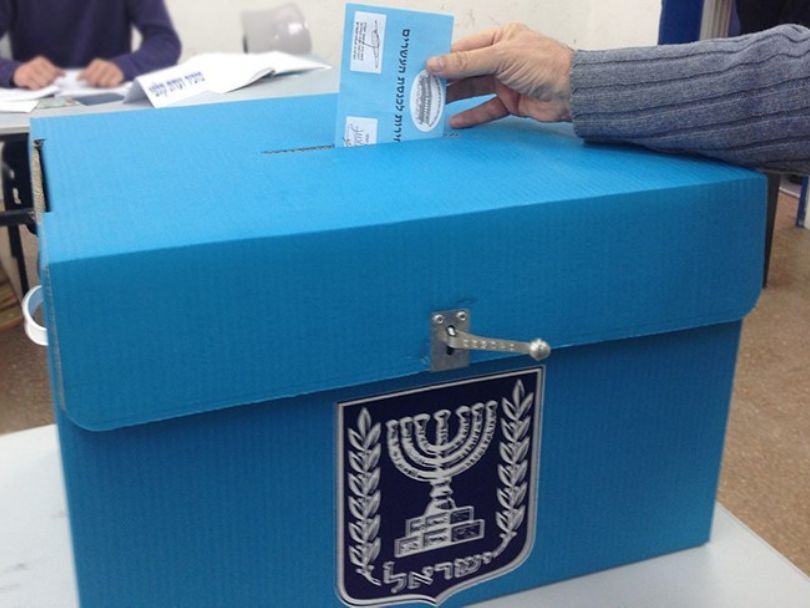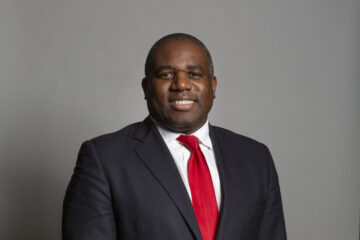
Photo: Heinrich-Böll-Stiftung, CC BY-SA 2.0 via Wikimedia Commons
The contours of the choice before Israeli voters on 23 March became clearer last week as parties submitted their final electoral lists, with centre-left rivals to the Labor party dropping out, the far-right consolidating and the main Israeli-Arab alliance splintering.
What happened
- Last Thursday was the deadline for parties to submit their slates to the Central Elections Committee.
- As the deadline approaches, parties traditionally merge and form new alliances as they battle to shore up their position and, in the case of those polling poorly, seek to avoid falling below the 3.25 percent threshold required to enter the Knesset.
- In all, 39 parties have registered lists, although polls suggest only 12-13 have a realistic chance of winning seats in the Israeli parliament. Parties can still withdraw from the election, but they can no longer merge.
Over and out
Labor’s revival under new leader Merav Michaeli saw two new centre-left parties – Tel Aviv mayor Ron Huldai’s The Israelis and former senior Yesh Atid MK Ofer Shelach’s Tnufa – dropping out of the campaign. After Huldai formed the party in December it initially polled strongly, but it has slid as Labor has begun to recover. Michaeli’s election at the end of last month appears to have finished off Huldai’s hopes of establishing a credible alternative to Labor. While refusing his pre-deadline entreaties to merge, Michaeli, held out an olive branch to Huldai: “Despite his dropping out of the race, I call on him to return to being a member of the Labor party, and I told him that I would welcome any advice and any assistance he can give.”
Bibi plays with fire
As he did before the March 2019 election, Benjamin Netanyahu sought to consolidate smaller far-right parties into one list, ensuring that they do not split and waste their votes. The prime minister hopes that the manoeuvring may gain him a handful of additional supportive MKs in the Knesset. Netanyahu’s tactics were only partially successful.
- Netanyahu had encouraged Bezalel Smotrich’s Religious Zionism party to link up with the pro-settler Jewish Home and the far-right Otzma Yehudit.
- Smotrich – whose National Union faction was previously part of the hard-right Yamina party of former defence minister Naftali Bennett – managed to secure a deal with Otzma Yehudit and the anti-gay Noam party.
- However, the Jewish Home party announced it wouldn’t join the far-right alliance and won’t run in the elections. The party’s newly elected leader, Jerusalem deputy mayor Hagit Moshe, chose instead to endorse Yamina. If Yamina goes into government, Bennett has promised Moshe he will secure her a ministerial post. It will be the first time since the State of Israel’s foundation that the Jewish Home or its precursor, the National Religious party, has not contested an election.
- Otzma Yehudit is highly controversial: its supporters are followers of the assassinated extremist rabbi Meir Kahane. Kahane’s Kach party was barred from the Knesset in the 1980s for its racism. Bennett refused to link-up with Otzma Yehudit prior to the March 2020 election. You can read LFI’s statement on Otzma Yehudit here.
- Netanyahu encouraged the alliance by offering the Religious Zionist party’s Ofir Sofer a slot on the Likud list. After the elections, he will then rejoin Smotrich’s party.
- There have been rumblings of discontent within Likud over Netanyahu’s actions, which threaten to allow Otzma Yehudit into the Knesset. Energy minister Yuval Steinitz on Sunday called Otzma Yehudit leader Itamar Ben Gvir “unacceptable because of his positions and statements” and said: “I do not see myself sitting in government with Ben Gvir. I oppose this and it is also unrealistic.”
- Former Likud minister Gideon Sa’ar, whose anti-Netanyahu New Hope party is polling well, categorically ruled out any deal with Otzma Yehudit, saying: “Ben Gvir will not sit in my coalition.”
- The first polls conducted after the final lists were submitted showed the new far-right alliance entering the Knesset with four seats in a Channel 12 poll and five in a survey for Channel 13.
Sticking it out
Blue and White – which fought Likud to a draw and came close to ousting Netanyahu in each of the three elections in 2019-20 – is now in the electoral doldrums following defence minister Benny Gantz’s decision to renege on his previous pledges and join a “unity government” led by the prime minister last summer. Despite teetering close to the threshold, Gantz is vowing to “run to the end”. That could prove significant, warned the Jerusalem Post’s former editor-in-chief Jeff Barak: “Although Gantz belatedly admitted his error [in joining the government], he is stubbornly insisting Blue and White will fight next month’s elections, putting the anti-Netanyahu majority at risk due to the very real possibility of Blue and White (deservedly) failing to cross the electoral threshold.”
Not so Joint
The Israeli-Arab Joint List has splintered into two rival factions after failing to negotiate an agreement to end long-running tensions within the alliance.
- The Joint List, which included Islamists, Arab nationalists and socialists and communists, was the third-largest group in the Knesset after the March 2020 election, winning 15 seats.
- However, the conservative Islamist Ra’am party is now going to run separately from the Hadash, Balad and Ta’al parties next month.
- Tensions between Ra’am and the three other parties in the alliance had been growing after its leader, Mansour Abbas, adopted an increasingly warm stance towards the prime minister and his government. He has indicated that, to advance the interests of Israeli-Arabs, he would be open to serving as a minister in a Likud-led government and even voting to give Netanyahu immunity from prosecution in the prime minister’s current corruption trial. Hadash had previously warned: “We won’t allow a branch of the Likud party in the Joint List.”
- Justifying the split, Ra’am alluded to Joint List leader Ayman Odeh’s Knesset vote last year to ban “conversion therapy” for LGBT people saying: “The other factions of the Joint List have refused to commit to not voting on laws that contradict the beliefs of our conservative society, including support for homosexuality.”
- The split in the Joint List could be good news for Netanyahu, with the Channel 12 poll showing it falling from 15 to nine seats, with Ra’am failing to cross the threshold. The Channel 13 poll had the Joint List on seven and Ra’am on four.
Best of frenemies
The election may bring together some unusual bedfellows:
- Last week, Meretz MK Yair Golan said the left-wing party might back Sa’ar if the right-winger can oust Netanyahu. Asked about the prospect of supporting a Sar’ar led government, he responded: “Unequivocally yes. The first thing to do is to eradicate corruption from among us. Corruption is what is destroying the country and Netanyahu is undoubtedly a fundamentally corrupt person.”
- The new leader of the ultra-Orthodox United Torah Judaism, Moshe Gafni, hinted his party’s traditional support for Netanyahu can’t be taken for granted. Having vowed to back the prime minister prior to the previous two elections, Gafni said only that UTJ would “probably recommend him”. He even indicated a deal with Yair Lapid, leader of Yesh Atid party, might not be out of the question despite the centre-left party’s secularist approach.
- But UTJ knows it may need to make some new friends: fuelled in part by public anger at high-profile breaches of the coronavirus rules in Haredi communities, 61 percent of Israeli voters say they don’t want to see the ultra-Orthodox parties – UTJ and Shas – in the country’s next government.
What happens next
The 23 March election will represent the fourth time in two years Israelis have gone to the polls. Each election ended in deadlock. The first polls conducted after the final lists were submitted again pointed to another inconclusive result.

